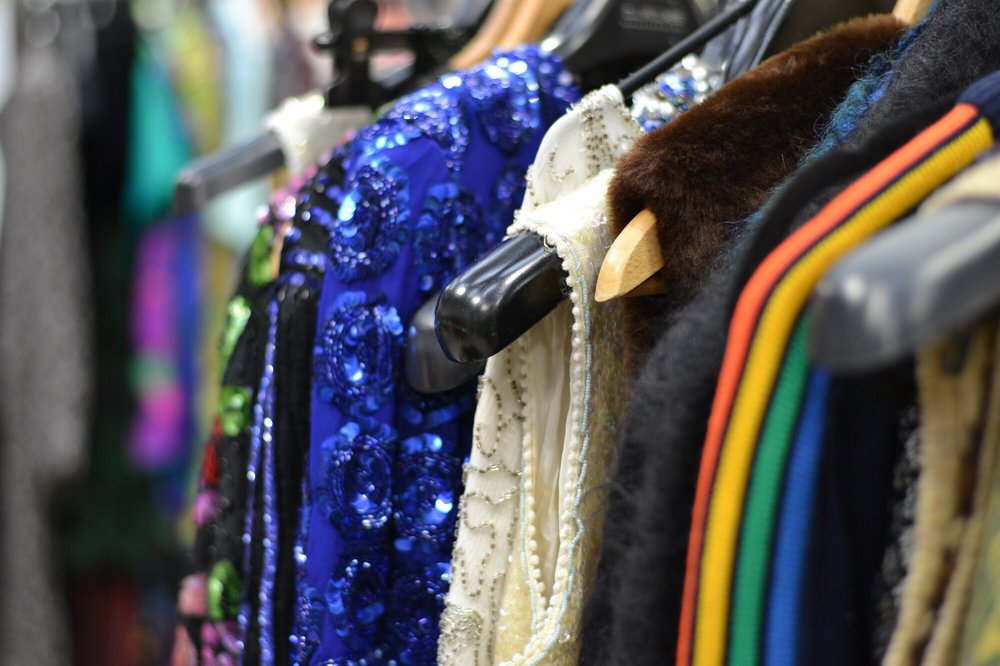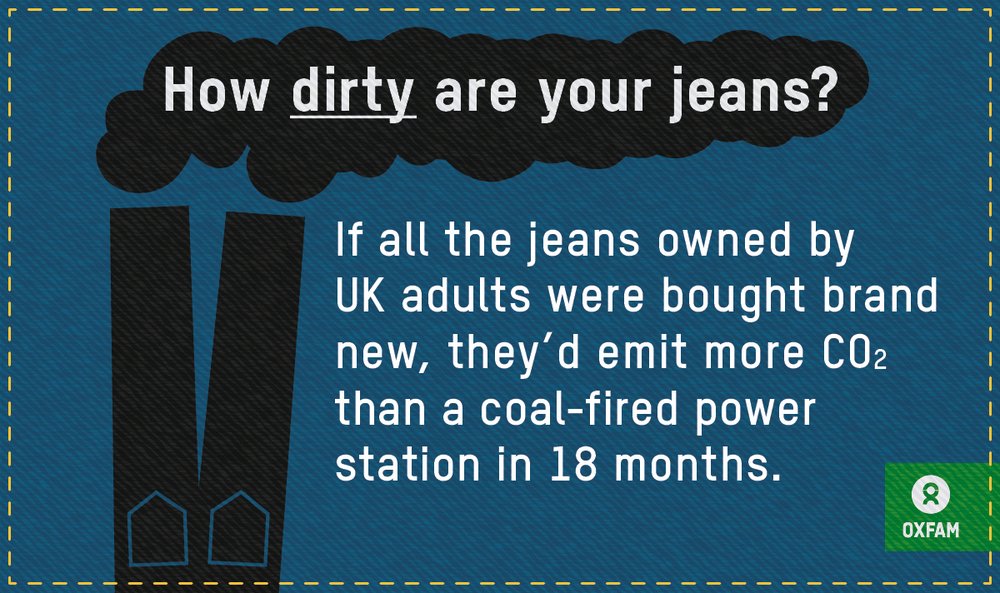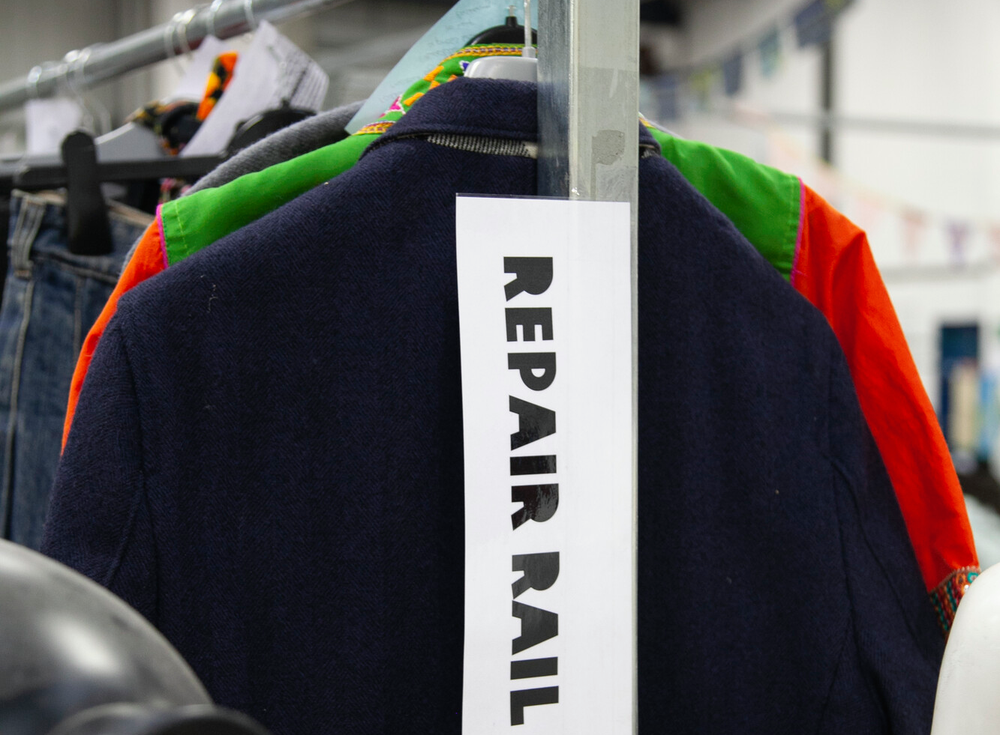What is Sustainable Fashion?
Did you know Oxfam’s been reselling clothing since the 1940s when the first Oxfam shop opened? Today, Oxfam has more than 500 shops in the UK promoting the circular economy and sustainable fashion by extending the life of clothing while raising money to help end poverty.
What is sustainable fashion?
Sustainable fashion is a term for items of clothing made taking the human and environmental impacts of production into account to support a more just supply chain. It can also include items that are sold second hand to extend their life. And items sold second hand to raise money for causes that promote sustainability.
Emma James-English/Oxfam

Why is sustainable fashion important?
Overproduction is a big problem within the clothing industry. Clothes produced cheaply and at mass scale leave a negative footprint on the environment. Whether through creation, transportation, or disposal. And according to The UN Alliance for Sustainable Fashion, the average consumer now buys 60% more clothing than they did 15 years ago.
We need to change the way we approach shopping, as with new fashion trends comes increasing demand for clothing that is quite literally unsustainable.
Sustainable Fashion Facts
1. The average consumer now buys 60% more clothing than they did 15 years ago — The UN Alliance for Sustainable Fashion.
2. Less than 1% of textiles and clothes are genuinely recycled into new textiles and clothes — The Ellen MacArthur Foundation
3. Garments are the second highest at-risk product for modern slavery — Fashion Revolution’s Impact Report (2019)
4. Fast Fashion Produces more carbon emissions per minute than driving a car around the world six times. — Oxfam
5. If all the jeans owned by UK adults were bought brand new, they'd emit more CO2 than a coal-fired power station in 18 months. — Oxfam
6. Extending the average life of clothes by just nine months would save £5 billion in resources used to supply, launder, and dispose of clothing. — WRAP
7. Nearly a quarter of us say the thrill of shopping for new clothes lasts longer when we buy second hand.
Oxfam

How to make sustainable fashion choices
There are lots of ways to make sustainable fashion choices, from choosing sustainable fashion brands to shopping second hand and repairing and re-wearing.
Shop second hand fashion
We often think about the damage carbon emissions from planes, trains and automobiles has on the environment, but we can end up overlooking the impact fast fashion is having on the environment. Shopping second hand is a great way to give pre-loved clothes a new lease of life, and you can find unique vintage pieces from our womenswear and menswear collections.
In the 70s Oxfam held ‘Nearly New’ fashion shows for the public and we’re still hosting them today. This year we’ll be making an appearance at London Fashion Week with an Oxfam catwalk show – keep your eyes peeled.
And now in its sixth year, Oxfam’s annual Second Hand September campaign continues to highlight the damage fast fashion is having on the environment. We’re asking consumers to change the way they think about shopping by asking them to consider buying second hand only for 30 days. For second-hand shopping inspiration, take a look at our huge range of men's clothing and women's clothing on the Oxfam Online Shop.
Shop second hand denim
Fashion has long held a love affair with denim. Considered a classic cult staple in many wardrobes the world over, denim continues to be reimagined in runways to high street collections year on year. For something that never quite goes out of fashion, denim is often cast aside as new trends creep in. However, denim remains a popular choice for those looking for both new and those on the hunt for vintage. But before you rush out to show your commitment towards your love of denim, think about the impact a pair of new jeans is having on our planet and consider shopping second hand instead.
Choose sustainable fashion brands
Second Hand September isn’t the first time we’ve tried to open consumers’ minds to the world of clothing sustainability. Oxfam’s clothes code campaign in the 90s called for retailers to adopt a code of conduct to ensure basic rights for workers in the clothing industry and this is just as important today as it was then.
When you buy new clothes, buying them from sustainable fashion brands that pay fair wages to those working in the supply chain and use responsibly sourced, sustainable materials isn’t just good for people and planet. Sustainable fashion brands also often make clothes that last longer so you don’t need to buy clothes as often. And if you choose capsule wardrobe items that will never go out of fashion that will help too.
Renting clothes
Cognitive psychologist Dr Carolyn Mair partnered with Oxfam on a commissioned study of 2,000 adults looking at shopping behaviour and found that nearly half of us enjoy shopping for brand new clothing but that post-shopping delight fades after just four wears as our brains quickly become accustomed to new things.
Next time you’re looking for that dopamine hit consider attending a clothes swap party or renting something for that fancy function instead. Last year, fashion rental company HURR and Oxfam joined forces so more of us could rent high-end clothing for much less – 100% of all rentals going directly to Oxfam helps beat poverty around the world.
Making clothes last longer
Another way to change your shopping habits for the better is to hold on to clothes for longer by using simple repair techniques and asking ourselves do we need this new item of clothing in the first place? Each time we buy something new we’re placing increasing demand on the world of fast fashion.
There are lots of simple hacks to make clothes last longer.
Kitty Norwell/ Oxfam

Sustainable clothing brands
You might have noticed Oxfam made news headlines last year when fashion designer Harris Reed created 10 catwalk looks at Found, his London Fashion Week show at the Serpentine Pavilion using donated wedding dresses from Oxfam by upcycling them into luxurious garments. Reed showed how possible it is to make the switch to sustainable clothing.
There are lots of sustainable clothing brands out there and many retailers have sustainable lines within their ranges. Oxfam has partnerships with M&S and Sainsbury’s to develop innovative circular solutions by enabling people to donate through take-back clothing schemes, textile donation banks and collection points. We’ll keep doing our best to raise awareness of the importance of making fashion more sustainable.
The Environmental Impact on Fast Fashion
Landfill lies host to a mountain of perfectly wearable clothing. With so few clothes recycled into new textiles it’s time to take a different approach to how we dispose of our pre-loved items. We should all be considering a life less throwaway when it comes to our own wardrobes but if that’s not an option why not consider donating it instead? Maybe that means passing it on to a friend to make use of it, giving it to your local charity shop to raise money for a good cause or selling it on to make income.
As well as being a feel-good way to shop for outfits that are new to you, choosing second hand clothing instead of new every time can be a positive step toward sustainability. By recirculating our clothes – buying and wearing pre-loved can reduce the demand for new clothes which in turn helps to reduce damage to our planet because as this parliament publication finds – when synthetic textiles are landfilled or incinerated, they can leach harmful microfibres into the environment.
Impact on people making clothes
Fashion Revolution’s Impact Report (2019) proves that most fast fashion brands can keep prices low by employing garment workers in developing countries from the poorest communities who are paid below the living wage.
The demand for fast fashion right here, right now means the likelihood of exploitation somewhere else.
The difference between fast fashion retailers and sustainable fashion brands is that the latter tend to focus on producing quality craftsmanship and long-lasting materials to make an item of clothing last longer and the longer an item stays in our wardrobes the better. So, the fewer items we buy on impulse the less demand we place on a world where fast fashion can thrive, and workers can be exploited. Sustainable fashion brands might also look to use more biodegradable materials using natural or recycled fabrics which won’t pollute the environment as opposed to fast-fashion favourites polyester, nylons and acrylics which require a significant amount of energy to produce and much longer to decompose.
Buying fewer clothes won’t threaten job security for workers if we demand better from retailers because if everyone changed their shopping habits so clothes were produced in lower volume and made of higher quality many of us might be willing to pay a little more for clothes that would stand the test of time – items we could truly treasure for more than a five-minute thrill.
More posts like this
